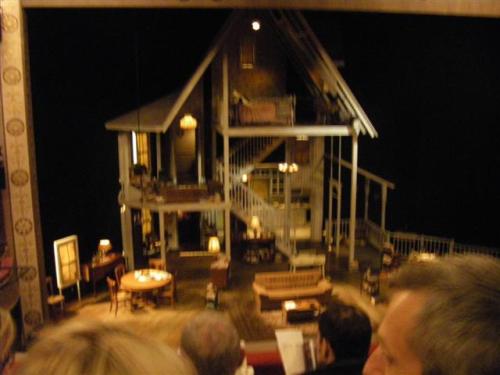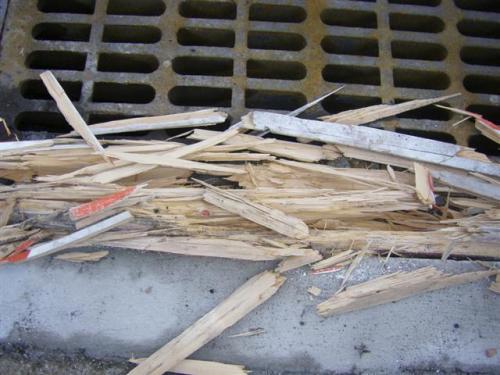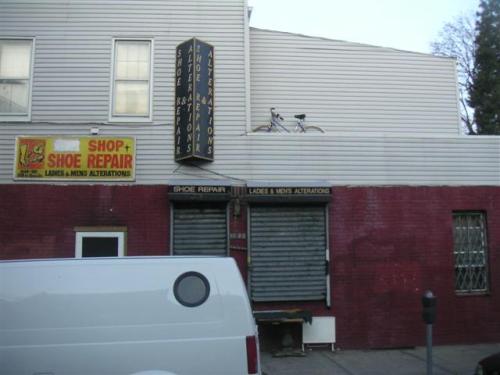I went back to Boston for the first time since the early 1990s for the American Literature Association. I was bowled over by the changes in my home town in the last fifteen years. I walked about a fair piece, mostly in the Back Bay and South End. These were the neighborhoods that I hung around in as a kid and young adult: it is the “scene of the crime.” One morning, the day I read my paper I woke up early to proofread my presentation one last time and I went to a park on West Newton Street and worked on a park bench.
I left Boston in 1979 and more or less severed all emotional ties with the place, or so I thought. “Boston Sewer” is how I simplified things, melting adolescence, racism, segregation, self-centered (and imagined) betrayals. I’ve spent 26 years gleaning negative reports about Boston, its environs and inhabitants. (My favorite is pointing out to people who say they are from Boston that they are actually from the vanilla suburbs). Going back I found that it was much more complicated.

I walked all around the old neighborhood and looked the changes. After I worked over my paper I walked back up to the Back Bay, sat in front of my old High School and spontaneously wrote the following:



In one of the Star Trek Movies they seed a barren planet with some sort of super-mutant-DNA-bomb, with Spock as the yolk, turning the stone sphere into a lush tropical paradise in minutes. There is a similar phenomenon occurring in Boston [and I guess New York which I haven’t noticed because I live here]. Rather than the the genesis bomb, they’ve dropped the wealth bomb. Like the planet, the basic geography and contours have not changed, but on each of the surfaces, details, and facets you can see the wealth crystallize and accrete. It is hard to say how it started; perhaps the sidewalks spontaneously turned to brick and the streets to cobblestones. Maybe the depressing, functional gray-steel mercury vapor streetlamps of the 1970s began to melt: past the beaux-artes -street-poles of Paris they stopped at the neo-colonial-stained -glass-gas-lamps that I could imagine Ben Franklin lighting, if it weren’t for their hermetically sealed computer ignition systems.
It is like Boston got beaten with the rich stick. Charitably the metaphor would be like a coppersmith hammering a rod into a beautiful plate or piece of jewelry. You can see the patina of wealth on every surface, whether it dates from 3oo years ago or the 1970s. The stone and brick has been cleaned so the black church I went into in the 1970s is now beautiful shades of honey and dusk. Trinity across the Square is “Pink granite [and] Longmeadow sandstone.”
Uncharitably it is like “the ugly stick” that they beat “yo’ Mama” with in the HS locker-room. The rich have money , style (of a sort) and class (which they get to define), but they don’t have taste. Wealth is like the ugly stick because of the garish repetition of before (what’s worked before).
As I sat on the bench in front of my old HS, a place where I had made out and been beaten up (thank god I’ve grown up), I was taken by the hyper-rich character of Newbury Street, which was never that poor. I watched the city wake up from there, a black man selling newspapers on the street, a white woman collecting cans (she turned up the bottle of tequila in the garbage with a corner left in it) and checking phones for uncollected change.

By 7 ivy league t-shirts drew their owners out for runs to and from the public gardens. By 8 I saw a few extremely well healed older women hop out of double parked Scandinavian cars to get coffee and pastries from Starbuck’s (It’s own kind of viral wealth-growth). I wore less make-up and less elaborate costumes when I played Gandolf in Ms. Tisset’s theater program than these women did. The cobblestones didn’t slow either of them down when they walked over on the 4″ heeled pumps that looked like stilts that early on a Sunday morning. These are my first impressions of one morning on the corner of Newbury and Dartmouth Street in 2007. 
Before this I had walked around the South End, which sharpened my feeling of alienation. Now I know that I am part of the gentrification of the South End. My parents, my family, our commune (or boarders) were part of what changed the tenor of the neighborhood. As I recall fondly the friends I made, the adults that lived there and were kind to me as a child and adolescent (and being kind to adolescents is not easy), I realize that our presence on the block was part of why Tommy Thompson can no longer live there with his two dogs and a motorcycle. I wonder if any of the working class people (or their descendants) who lived on the block before we moved in still hold the titles? When the good intentioned hippies and artists move in, the rents will soon reach escape velocity and become astronomical.

Home
But there were those years when kids and their families could afford these old houses and have lots of space. Some had more, others had less (I wonder if the Coles are still renovating their house on Rutland Sq?). It was a good childhood, and I can only think fondly of the people and times. I hope I haven’t written anything here that is untrue or unkind. I’ll end with Ben’s e-mail and poem. I have to say I am of the same ambivalent opinion.
Maybe it’s only the inexorable creep of money, but the South End and all of Boston looks great. Actually, it smells, tastes, sounds and feels better too.
You can ride the urban rocket
so long as coin is in your pocket
But if you can’t pay the fare
get the fuck on out of there.







 The Hipster Antidote, Eccentric Gear
The Hipster Antidote, Eccentric Gear






